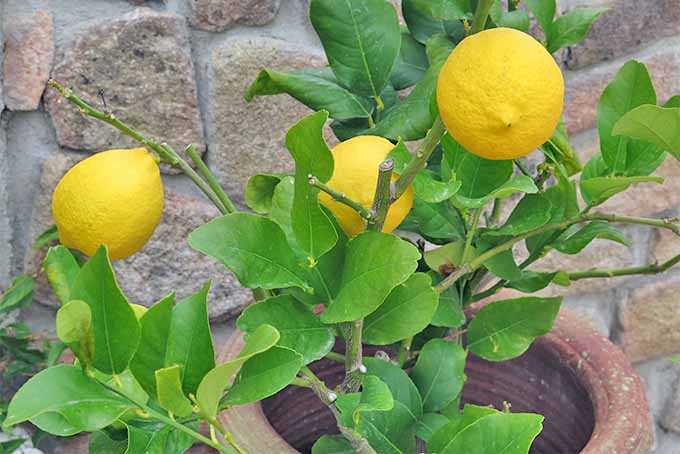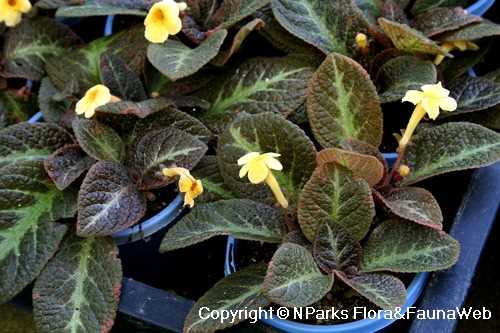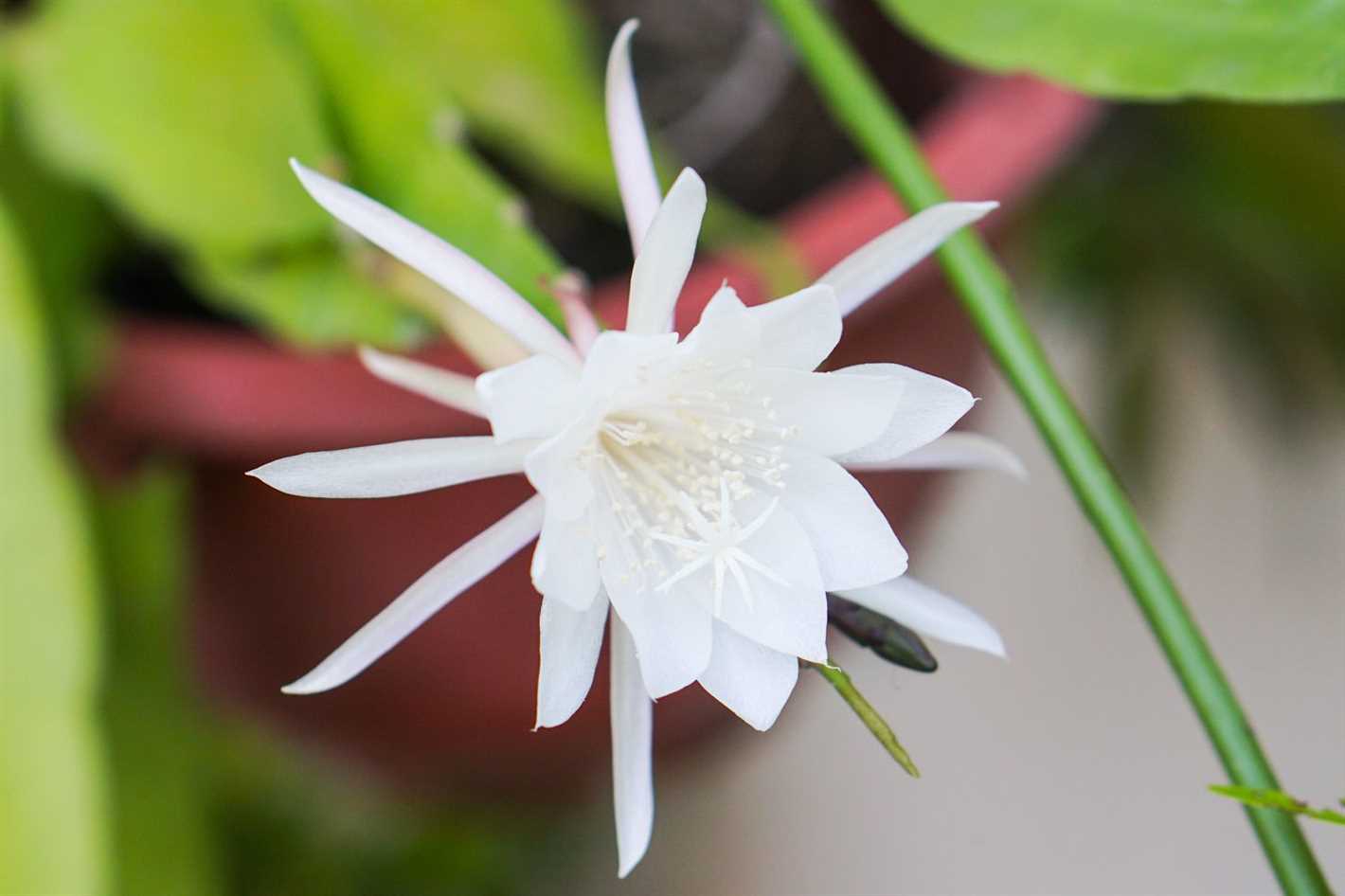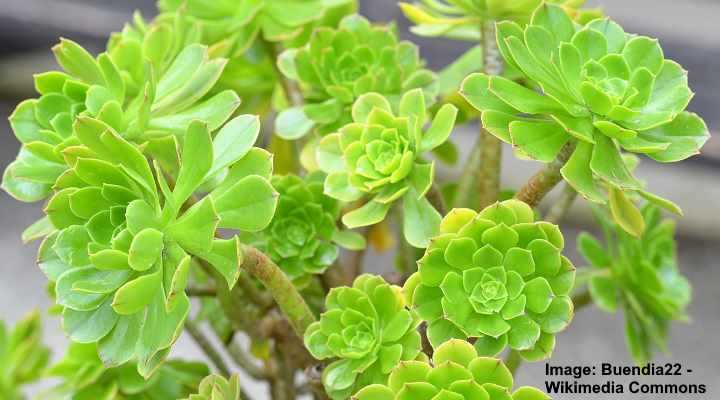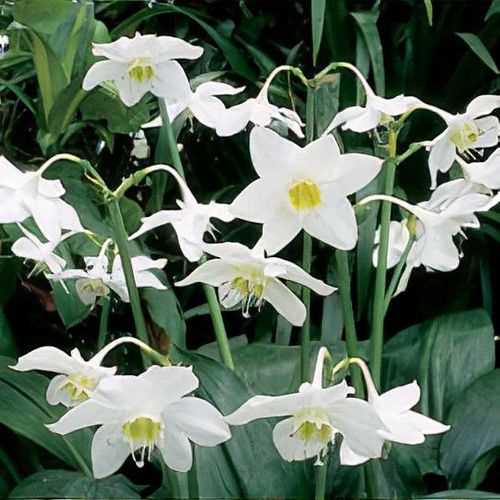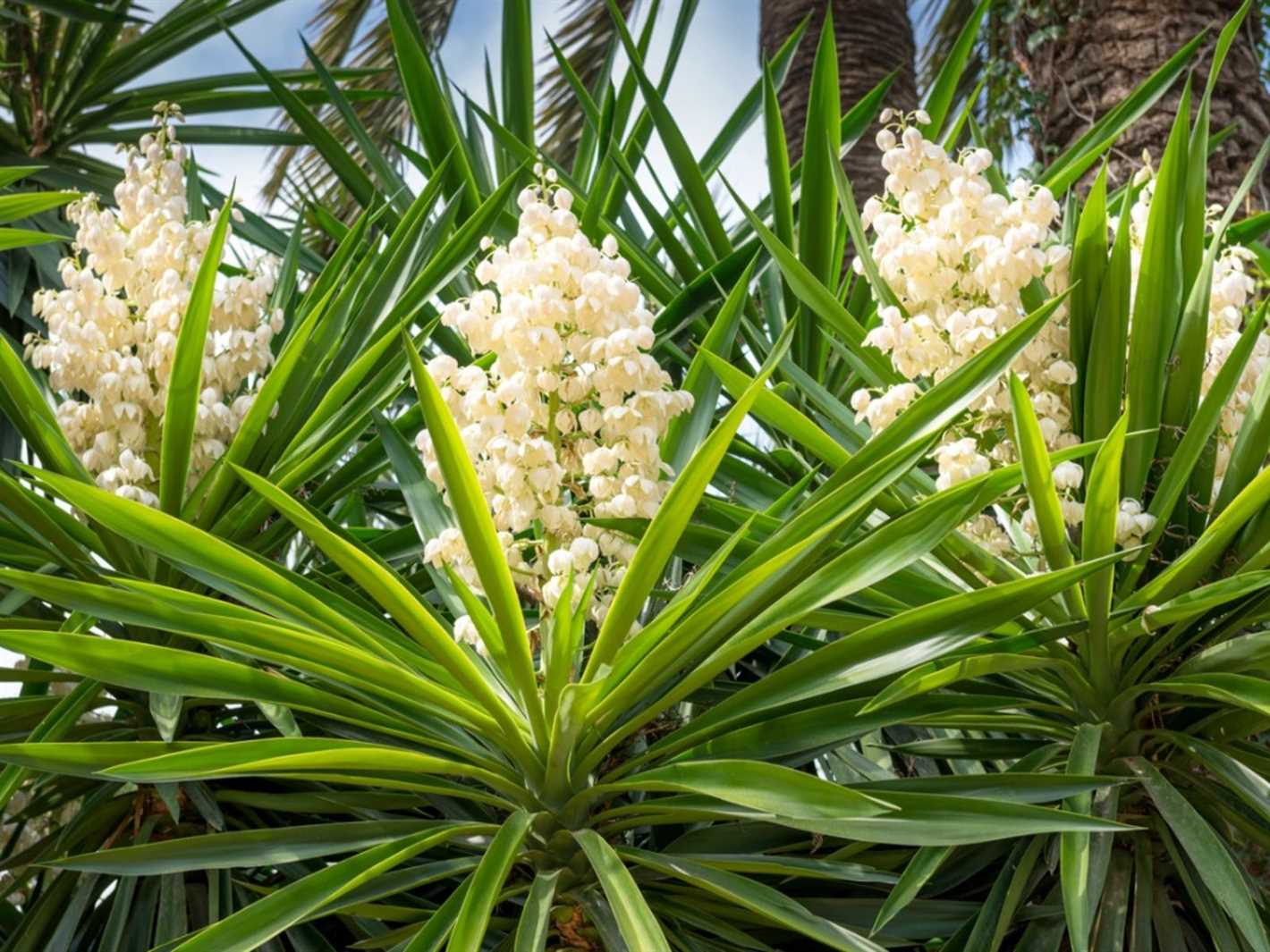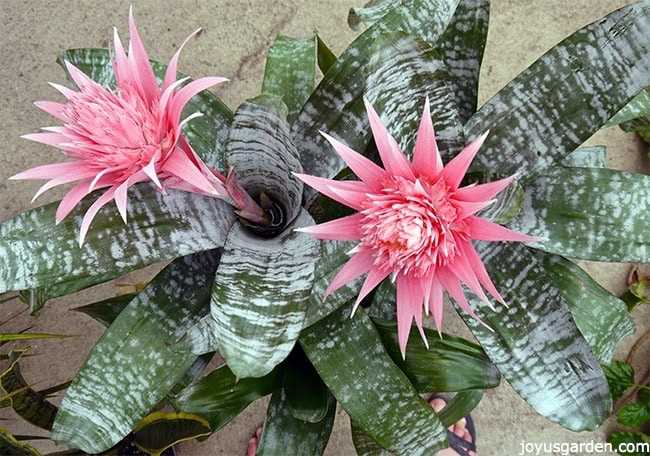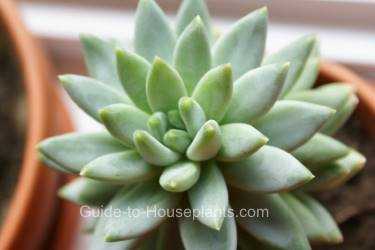- Understanding Maranta Plants
- Origin and Common Names
- Physical Characteristics
- Cultivation Requirements
- Popular Maranta Species
- Propagation Methods
- Conclusion
- Key Facts, Characteristics, and History
- Cultivating Maranta Plants
- Light
- Watering
- Temperature and Humidity
- Soil and Fertilizer
- Propagation
- Common Issues
- Conclusion
- Soil Requirements, Watering, and Light Conditions
- Soil Requirements
- Watering
- Light Conditions
- Air Humidity
- Fertilizing
- Propagation of Maranta Plants
- 1. Division
- 2. Stem Cuttings
- 3. Rhizome Division
- Methods, Tips, and Common Problems
- Propagation Methods
- Tips for Care
- Common Problems
- Maranta Plant Care
- Light
- Temperature
- Humidity
- Watering
- Soil
- Fertilizer
- Pruning
- Propagation
- Pests and Diseases
- Decorative Use
- Fertilizing, Pruning, and Pest Control
- Fertilizing
- Pruning
- Pest Control
- Popular Maranta Species
- Different Types and How to Identify Them
- 1. Maranta Leuconeura (Prayer Plant)
- 2. Maranta Leuconeura erythroneura (Red Veined Prayer Plant)
- 3. Maranta Leuconeura Kerchoveana (Rabbit’s Foot Prayer Plant)
- 4. Maranta Fascinator (Herringbone Plant)
- 5. Maranta Laxa (Silver Feather)
- 6. Maranta Arundinacea (Arrowroot Plant)
- Identifying Maranta Plants
- Q&A:
- What are some tips for cultivating Maranta?
- What are the different species of Maranta?
- What are the different varieties of Maranta?
- How do you propagate Maranta?
- How do you care for Maranta plants?
- Can Maranta grow outdoors?
- Are Maranta plants toxic to pets?
- Video: The best way to propagate prayer plants (Maranta leuconeura)
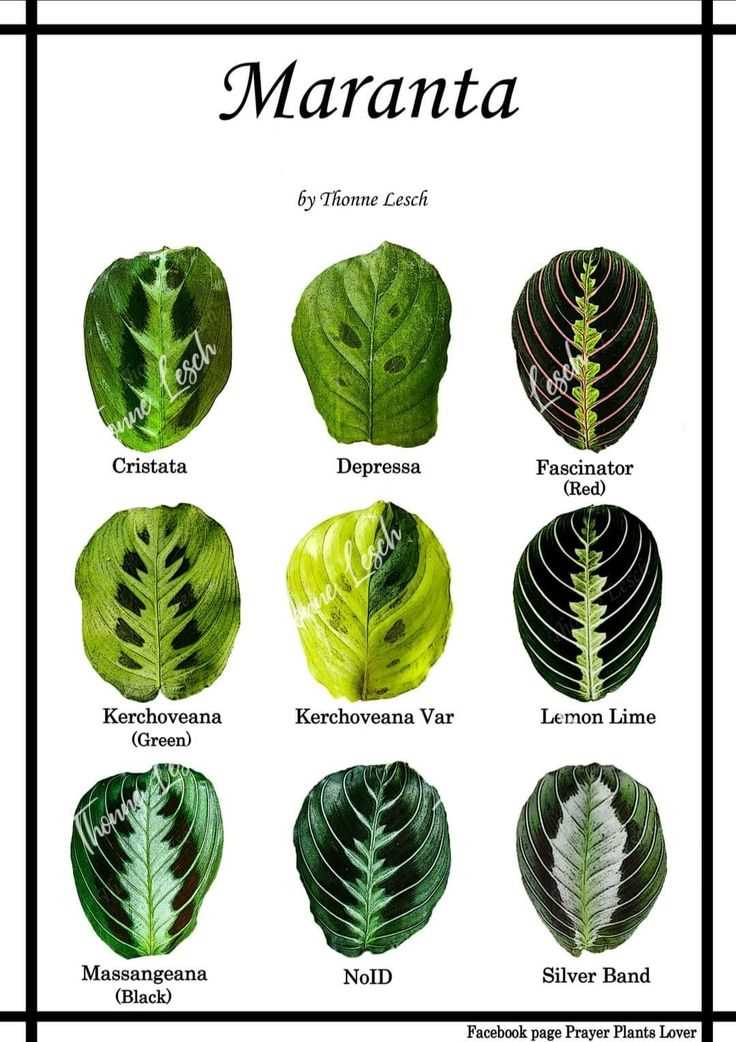
Welcome to your ultimate guide to maranta cultivation, species, and varieties! Whether you are a beginner or an experienced gardener, this article will provide you with all the information you need to successfully grow and care for your maranta plants.
Maranta, also known as prayer plants, are a popular choice for indoor gardening due to their striking foliage and low maintenance requirements. These plants are native to the tropical regions of Central and South America and are prized for their unique ability to fold their leaves upward at night, resembling hands in prayer.
One of the key factors in successfully cultivating marantas is providing them with the right growing conditions. They thrive in bright, indirect light and prefer soil that is consistently moist but not waterlogged. These plants also appreciate high humidity, so misting them regularly or placing them near a humidifier can help keep them happy.
There are several species and varieties of maranta to choose from, each with its own distinct characteristics. Some popular varieties include Maranta leuconeura, Maranta tricolor, and Maranta fascinator. Maranta leuconeura, also known as the red prayer plant, features vibrant red veins against dark green leaves, while Maranta tricolor displays colorful foliage with shades of green, purple, and red. Maranta fascinator is known for its unique feather-like markings on its leaves.
Whether you are looking to add a touch of tropical flair to your home decor or want to expand your indoor plant collection, marantas are sure to delight with their stunning foliage and easy care requirements. So grab your gardening gloves and let’s dive into the world of maranta cultivation, species, and varieties!
Understanding Maranta Plants
The Maranta plant is a popular choice among plant enthusiasts due to its striking foliage and easy care requirements. In this section, we will delve into the key aspects of understanding Maranta plants.
Origin and Common Names
The Maranta plant, scientifically known as Maranta spp., belongs to the Marantaceae family. It is native to the tropical regions of Central and South America, primarily found in Brazil. The plant is commonly referred to by various names, including Prayer Plant, Herringbone Plant, Rabbit’s Foot Plant, and Maranta Leuconeura.
Physical Characteristics
Maranta plants are known for their eye-catching foliage. The leaves are typically oval-shaped with prominent veins that run perpendicular to the midrib, creating a herringbone pattern. The coloration of the leaves varies between species, ranging from shades of green and burgundy to purple and silver. Additionally, some species feature patterns of spots or stripes.
Cultivation Requirements
Maranta plants thrive in warm and humid environments, mimicking their native tropical habitats. They prefer bright, indirect light but can also tolerate low light conditions. Direct sunlight should be avoided as it can scorch the leaves.
These plants require consistently moist soil, but overwatering should be avoided as it can lead to root rot. It is recommended to water Maranta plants when the top inch of soil feels dry to the touch. Misting the leaves regularly can help maintain the high humidity levels that Maranta plants prefer.
Popular Maranta Species
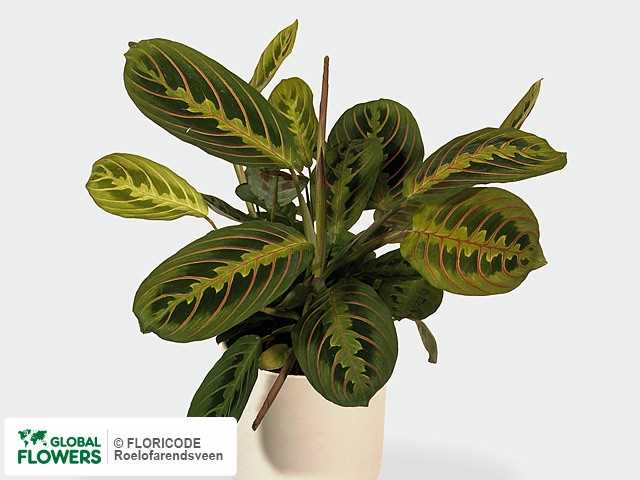

There are several popular Maranta species and varieties available in the market. Some of the most common ones include:
- Maranta leuconeura var. kerchoviana: Also known as the Rabbit’s Foot Plant, this species has striking silver-green leaves with dark green veins.
- Maranta leuconeura erythroneura: This variety is commonly known as the Herringbone Plant, characterized by its dark green leaves with prominent red veins.
- Maranta leuconeura massangeana: The Massangeana variety features leaves with a deep green color and a reddish-purple underside.
Propagation Methods
Maranta plants can be propagated through various methods, including division, stem cuttings, and rhizome division. Division involves separating the rhizomes with roots from the mother plant and replanting them in separate containers. Stem cuttings can be taken from healthy plants and rooted in water or well-draining soil. Rhizome division is a similar process to division, focusing on the underground rhizomes.
Conclusion
Understanding Maranta plants is essential for their successful cultivation. From their origin and physical characteristics to their ideal growing conditions, Maranta plants offer a visually appealing addition to any indoor plant collection. With their unique foliage and relatively easy care requirements, these plants can be a rewarding choice for both beginner and experienced plant enthusiasts.
Key Facts, Characteristics, and History
The Maranta plant, also known as the Prayer Plant, is a popular houseplant due to its beautiful foliage and relatively low maintenance needs. Here are some key facts, characteristics, and a brief history of this stunning plant:
- The Maranta plant belongs to the Marantaceae family, which is native to the tropical regions of Central and South America.
- There are several species and varieties of Maranta, known for their unique leaf patterns and colors.
- The leaves of the Maranta plant are usually green with intricate patterns of lines, spots, or blotches in various shades of red, pink, white, or silver.
- One of the distinctive characteristics of Maranta plants is their ability to fold their leaves up at night, resembling praying hands, hence the common name “Prayer Plant”.
- Maranta plants are relatively compact, reaching a height of about 6-12 inches, making them suitable for small spaces or as tabletop plants.
- These plants prefer indirect or filtered light, as direct sunlight can scorch their delicate leaves.
- Maranta plants require well-draining soil and should be watered when the top inch of the soil feels dry.
- They thrive in higher humidity levels, so misting the leaves or placing the plant on a tray of water can help increase humidity.
- The Maranta plant is not only loved for its aesthetic appeal but also for its air-purifying properties, improving the quality of indoor air.
As for the history of Maranta plants, they were first brought to Europe in the 19th century and quickly gained popularity as houseplants due to their attractive foliage. Over the years, breeders have developed various cultivars with different leaf colors and patterns, expanding the range of options for plant enthusiasts. Today, the Maranta plant is a well-loved choice for plant lovers looking to add a touch of tropical beauty to their indoor spaces.
Cultivating Maranta Plants
Maranta plants, also known as prayer plants, are popular houseplants known for their beautiful foliage and their unique ability to open and close their leaves in response to light. Cultivating Maranta plants can be a rewarding experience, as they are relatively easy to care for and can thrive in both indoor and outdoor environments.
Light
Maranta plants prefer bright, indirect light. Too much direct sunlight can scorch their delicate leaves, while too little light can cause the foliage to become dull and lose its vibrant colors. Place your Maranta plant in a location where it can receive bright, filtered light or in a spot with bright, indirect light.
Watering
Maranta plants like to be kept consistently moist, but not overly wet. Allow the top inch or so of the soil to dry out before watering again. Avoid letting the soil dry out completely between waterings, as this can cause the leaves to wilt. Use lukewarm water and water the plant thoroughly, allowing the excess water to drain out of the bottom of the pot.
It is also a good idea to provide humidity for your Maranta plant, as they prefer higher humidity levels. You can achieve this by misting the leaves with water or placing a humidifier nearby. Another option is to place the pot on a tray filled with water and pebbles, making sure the bottom of the pot is above the waterline.
Temperature and Humidity
Maranta plants prefer warm temperatures between 65 and 80 degrees Fahrenheit (18-27 degrees Celsius). They also thrive in environments with high humidity. If the air in your home is dry, you can increase the humidity by using a humidifier or by grouping your Maranta plant with other houseplants.
Soil and Fertilizer
Maranta plants prefer well-draining soil that is rich in organic matter. A mixture of peat moss, perlite, and compost is ideal for Maranta plants. You can also use a quality potting mix designed for tropical plants. Fertilize your Maranta plant every two to four weeks during the growing season with a balanced, water-soluble fertilizer. Be sure to follow the instructions on the fertilizer package for the correct dosage and application method.
Propagation
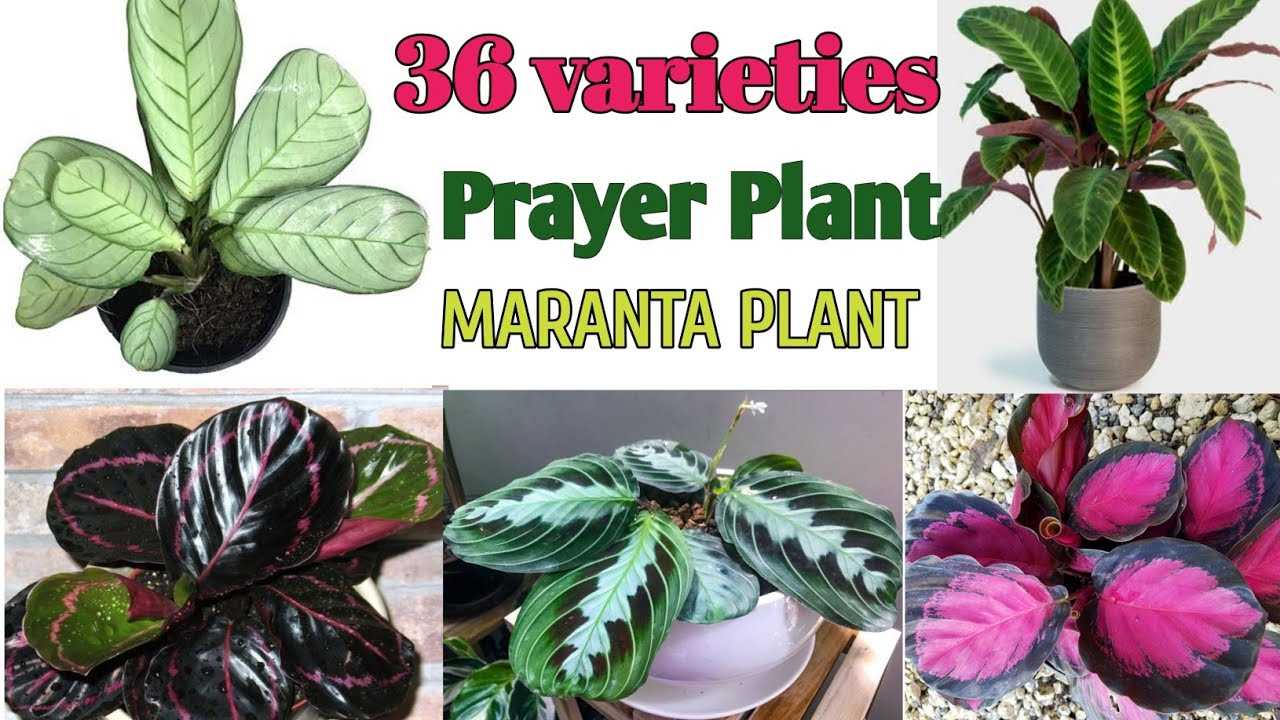

Maranta plants can be propagated through division or stem cuttings. To propagate through division, carefully remove the plant from its pot and gently separate the roots into smaller sections, making sure each section has some roots attached. Plant the divisions in separate pots with fresh potting soil and water thoroughly. To propagate through stem cuttings, select a healthy, non-flowering stem and cut it just below a leaf node. Remove the bottom leaves and place the cutting in a glass of water or a small pot with moist potting soil. Keep the cutting in a warm, humid environment and make sure to keep the soil or water moist. Roots should develop within a few weeks.
Common Issues
Maranta plants are generally not prone to pests, but they can occasionally be affected by spider mites or mealybugs. These can be treated with insecticidal soap or by wiping the leaves with a cloth dampened with a mild soap solution. Overwatering can also cause root rot, so be sure to allow the soil to dry out slightly between waterings and use well-draining soil.
Conclusion
Maranta plants are beautiful and relatively easy to care for, making them a great choice for both beginner and experienced gardeners. By providing the right amount of light, water, humidity, and fertilizer, you can help your Maranta plant thrive and enjoy its vibrant and unique foliage.
Soil Requirements, Watering, and Light Conditions
Soil Requirements
Maranta plants prefer well-draining soil that is rich in organic matter. A mixture of peat moss, perlite, and loamy soil is ideal for providing the necessary moisture retention and aeration. It is important to ensure that the soil pH is slightly acidic to neutral, around 6.0 to 7.0, to facilitate proper nutrient absorption.
Watering
Maranta plants require consistently moist soil, but they are susceptible to root rot if overwatered. It is important to water them whenever the top inch of the soil feels dry, but also to avoid waterlogging. Water can be reduced slightly during the winter months when the plant is in its dormant phase.
It is advisable to use filtered or distilled water to prevent the build-up of mineral salts in the soil, which can affect the plant’s overall health.
Light Conditions
Maranta plants thrive in bright, indirect light. They prefer an area with filtered sunlight or partial shade. Avoid placing them in direct sunlight, as it can scorch the leaves.
It is recommended to rotate the plant every few weeks to ensure even growth and prevent the leaves from leaning towards the light source.
If the leaves are pale or losing their vibrant colors, it may indicate that the plant is not receiving enough light. On the other hand, if the leaves develop brown patches or become scorched, it may indicate that the plant is receiving too much light.
Air Humidity
Maranta plants are native to tropical regions and thrive in environments with high humidity. To mimic their natural habitat, it is beneficial to increase humidity around the plant. This can be done by placing a tray of water near the plant or using a humidifier.
Misting the leaves with water can also provide additional moisture and help prevent the tips from drying out.
Fertilizing
Maranta plants benefit from regular fertilization during the growing season, typically spring through summer. A balanced, water-soluble fertilizer with equal parts nitrogen, phosphorus, and potassium can be used. Dilute the fertilizer to half strength and apply it every 2-4 weeks to avoid overfeeding the plant.
During the dormant period in winter, it is best to stop fertilization or reduce it to once every 6-8 weeks.
Propagation of Maranta Plants
Maranta plants can be propagated through several methods, including division, stem cuttings, and rhizome division. Each method has its own advantages and requirements, so it’s important to choose the one that suits your needs and preferences.
1. Division
Division is the most common and straightforward method of propagating Maranta plants. To propagate through division, follow these steps:
- Carefully remove the plant from its pot.
- Gently separate the root mass into smaller sections, making sure each section has healthy roots and at least one stem.
- Plant each divided section into separate pots filled with well-draining soil.
- Water the newly potted divisions and place them in a warm and humid environment.
2. Stem Cuttings
Propagation through stem cuttings is another common method for Maranta plants. To propagate through stem cuttings, follow these steps:
- Select a healthy stem with a few leaves, and make a clean cut just below a node.
- Remove the lower leaves, leaving only a few at the top.
- Dip the cut end in a rooting hormone to promote root development.
- Place the cutting in a pot filled with well-draining soil, and keep it in a warm and humid environment.
- Water the cutting regularly to maintain moisture.
3. Rhizome Division
Rhizome division is a less common method of propagating Maranta plants, but it can be successful if done correctly. To propagate through rhizome division, follow these steps:
- Carefully remove the plant from its pot and gently shake off any excess soil.
- Locate the rhizome, which is an underground stem that produces roots and shoots.
- Using a clean and sharp knife, carefully cut the rhizome into sections, making sure each section has healthy roots and at least one shoot.
- Plant each section in separate pots filled with well-draining soil.
- Water the newly potted sections and keep them in a warm and humid environment.
Propagation of Maranta plants can be a rewarding experience and a way to expand your plant collection. Whichever method you choose, make sure to provide the right conditions and care to ensure the success of the propagated plants.
Methods, Tips, and Common Problems
Propagation Methods
- Maranta can be propagated through division. Gently separate the root clumps of an established plant and plant each section in individual pots.
- You can also propagate Maranta through stem cuttings. Take a cutting that is about 4-6 inches long from the parent plant and remove the lower leaves. Place the cutting in moist soil and keep it in a warm and humid environment until roots develop.
- Another method is through seed propagation. Collect seeds from mature Maranta plants and sow them in well-draining soil. Keep the soil consistently moist and wait for the seeds to germinate.
Tips for Care
- Maranta prefers bright, indirect light. Avoid exposing it to direct sunlight, as it can scorch the leaves.
- Keep the soil consistently moist, but not waterlogged. Maranta prefers high humidity, so misting the leaves regularly or placing the plant on a tray of water-filled pebbles can help increase humidity.
- Maranta prefers temperatures between 60-80°F (15-27°C). Avoid placing it in drafty areas or near heating vents.
- Fertilize Maranta every 2-4 weeks during the growing season with a balanced houseplant fertilizer diluted to half strength.
- Rotate the plant regularly to ensure even growth and prevent it from leaning towards the light.
Common Problems
| Problem | Cause | Solution |
|---|---|---|
| Yellowing leaves | Overwatering, underwatering, or direct sunlight | Adjust watering schedule, provide indirect light |
| Brown leaf tips | Low humidity, underwatering, or over-fertilization | Increase humidity, adjust watering, reduce fertilizer |
| Leaf curling | Low humidity or excessively dry soil | Increase humidity, water the plant regularly |
| Spider mites | Dry air or infestation from nearby plants | Mist the leaves, spray with insecticidal soap |
Maranta Plant Care
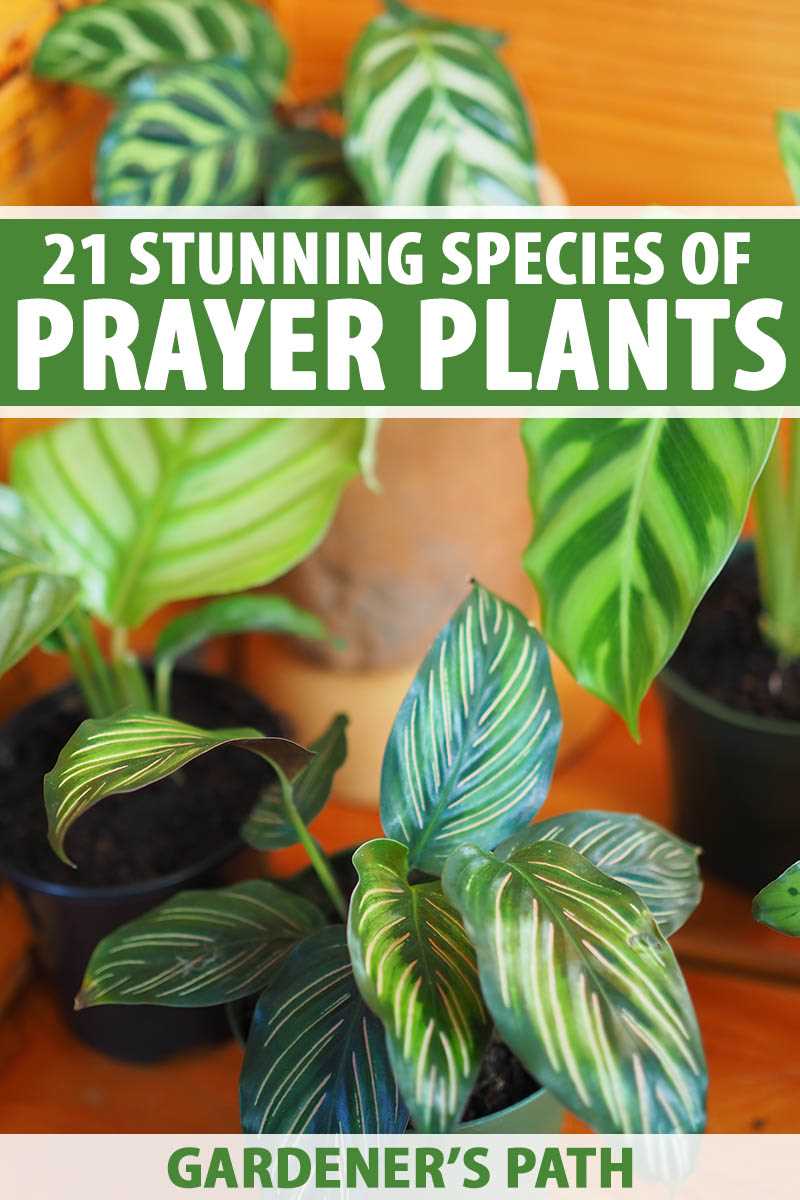

Light
Maranta plants thrive in bright, indirect light. Avoid direct sunlight, as it can scorch the leaves. Place your Maranta plant near a window with filtered light or in a well-lit room.
Temperature
Maranta plants prefer warm temperatures between 65°F and 75°F (18°C to 24°C). They are sensitive to cold drafts, so keep them away from windows and doors during the winter months.
Humidity
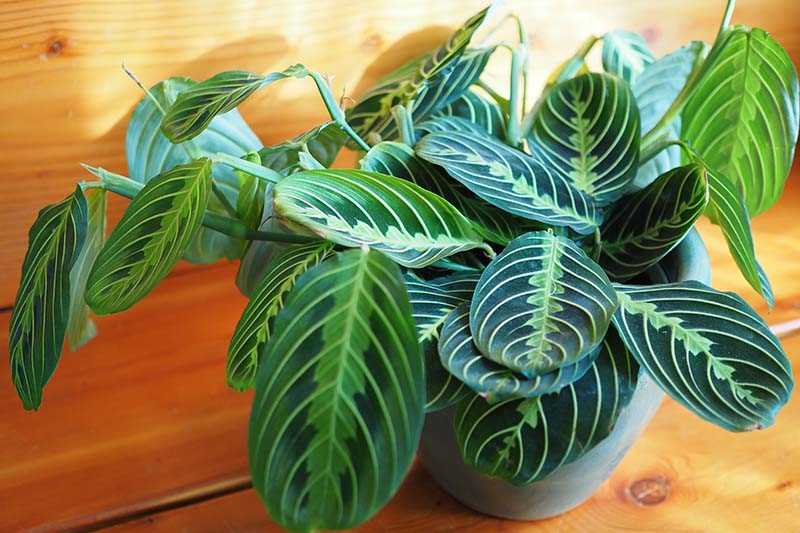

Maranta plants prefer high humidity levels. To increase humidity, you can use a humidifier, place a tray of water near the plant, or mist the leaves regularly with water.
Watering
Maranta plants like to be kept evenly moist, but not soggy. Water the plant when the top inch of soil feels dry. Avoid overwatering, as it can cause root rot. Drain any excess water from the pot to prevent waterlogging.
Soil
Maranta plants prefer well-draining soil that is rich in organic matter. Use a peat-based potting mix or create your own mix using equal parts of peat moss, perlite, and compost.
Fertilizer
Feed your Maranta plant with a balanced, water-soluble fertilizer every month during the spring and summer growing season. Follow the instructions on the fertilizer package for dosage.
Pruning
To keep your Maranta plant compact and bushy, prune the stems regularly. Trim any leggy or overly long stems to maintain the desired shape.
Propagation
Maranta plants can be propagated through division or stem cuttings. Carefully separate the plant into smaller sections by gently pulling apart the roots, or take stem cuttings with at least two nodes. Plant the divisions or cuttings in a pot with fresh soil and keep them warm and moist until they root.
Pests and Diseases
Maranta plants can be susceptible to mealybugs, spider mites, and aphids. Keep an eye out for any signs of pests and treat them with insecticidal soap or neem oil. Yellowing leaves or leaf curling can be signs of overwatering or underwatering.
Decorative Use
Maranta plants are popular as houseplants for their attractive foliage. They can be used as decorative plants in living rooms, bedrooms, or offices. The variety of colors and patterns on the leaves make them a visually appealing addition to any room.
Fertilizing, Pruning, and Pest Control
Fertilizing
Fertilizing is an essential part of Maranta care to ensure the plant receives the necessary nutrients for healthy growth. Here are some tips for fertilizing your Maranta:
- Use a balanced, water-soluble fertilizer with equal amounts of nitrogen, phosphorus, and potassium.
- Apply the fertilizer during the growing season, from spring to early fall, once every month.
- Dilute the fertilizer to half the recommended strength to avoid overfertilization, which can lead to burning the roots.
- Water the plant thoroughly after applying the fertilizer to prevent any potential damage.
Pruning
Pruning helps maintain the desired shape and size, as well as promotes new growth. Follow these pruning tips for your Maranta:
- Prune your Maranta in spring or early summer when it’s actively growing.
- Use clean, sharp pruning shears to avoid tearing or damaging the foliage.
- Remove any yellowed, damaged, or dead leaves by cutting them off at the base of the stem.
- Trim any leggy or straggly stems to promote a bushier growth habit.
Pest Control
Maranta plants are generally resistant to pests, but they can still be susceptible to a few common pests. Here are some pest control methods for your Maranta:
- Inspect your plant regularly for signs of pests, such as webbing, sticky residue, or chewed leaves.
- If you notice any pests, gently wipe the leaves with a damp cloth to remove them.
- For more stubborn pests, such as spider mites or mealybugs, use an organic insecticidal soap or neem oil.
- Avoid overwatering your Maranta, as excessively damp conditions can attract pests like fungus gnats.
By following these tips for fertilizing, pruning, and pest control, you can help your Maranta thrive and stay healthy.
Popular Maranta Species
Maranta is a genus of flowering plants in the family Marantaceae. Known for their unique foliage patterns, Maranta plants have become popular houseplants and are loved by plant enthusiasts worldwide. Here are some of the most popular Maranta species:
- Maranta leuconeura: Also known as the “prayer plant,” this species is famous for its unique leaf pattern resembling hands in prayer. It features green leaves with red veins and is known for its ability to fold its leaves upward at night.
- Maranta arundinacea: Commonly known as “arrowroot,” this species is primarily grown for its edible tubers. It has large green leaves and bears small, inconspicuous flowers. Arrowroot starch, extracted from the tubers, is widely used as a thickening agent in cooking.
- Maranta bicolor: This species is characterized by its dark green leaves with prominent pink veins. Its foliage has striking patterns, making it a popular choice for indoor gardens and terrariums.
- Maranta fascinator: Known for its eye-catching foliage, this Maranta species has green leaves with intricate patterns of dark green spots and stripes. Its attractive leaves make it a sought-after ornamental houseplant.
These are just a few examples of the popular Maranta species available. Each species has its own unique characteristics and care requirements, so it’s essential to research and understand the specific needs of the Maranta plant you choose to cultivate.
If you’re a fan of vibrant and patterned foliage, Maranta plants are a fantastic addition to your indoor plant collection. They provide visual interest and can thrive as easy-to-care-for houseplants when given the proper conditions.
| Species | Common Name | Leaf Characteristics |
|---|---|---|
| Maranta leuconeura | Prayer Plant | Green leaves with red veins, folds leaves at night |
| Maranta arundinacea | Arrowroot | Large green leaves, edible tubers |
| Maranta bicolor | – | Dark green leaves with pink veins |
| Maranta fascinator | – | Green leaves with dark green spots and stripes |
Different Types and How to Identify Them
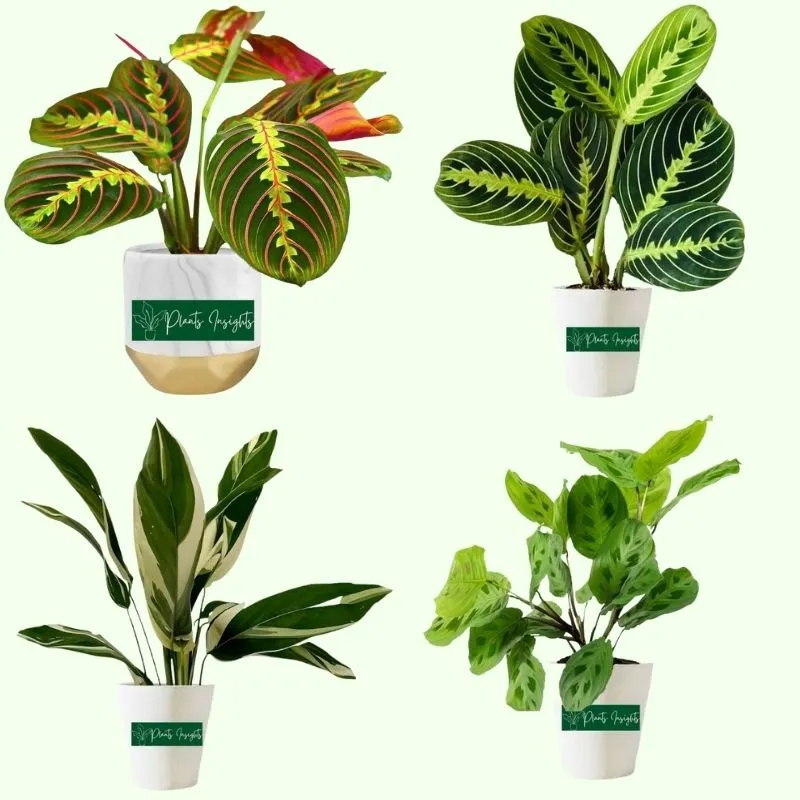

There are several types of Maranta plants, each with their own unique characteristics. Here are some of the most common types and how to identify them:
1. Maranta Leuconeura (Prayer Plant)
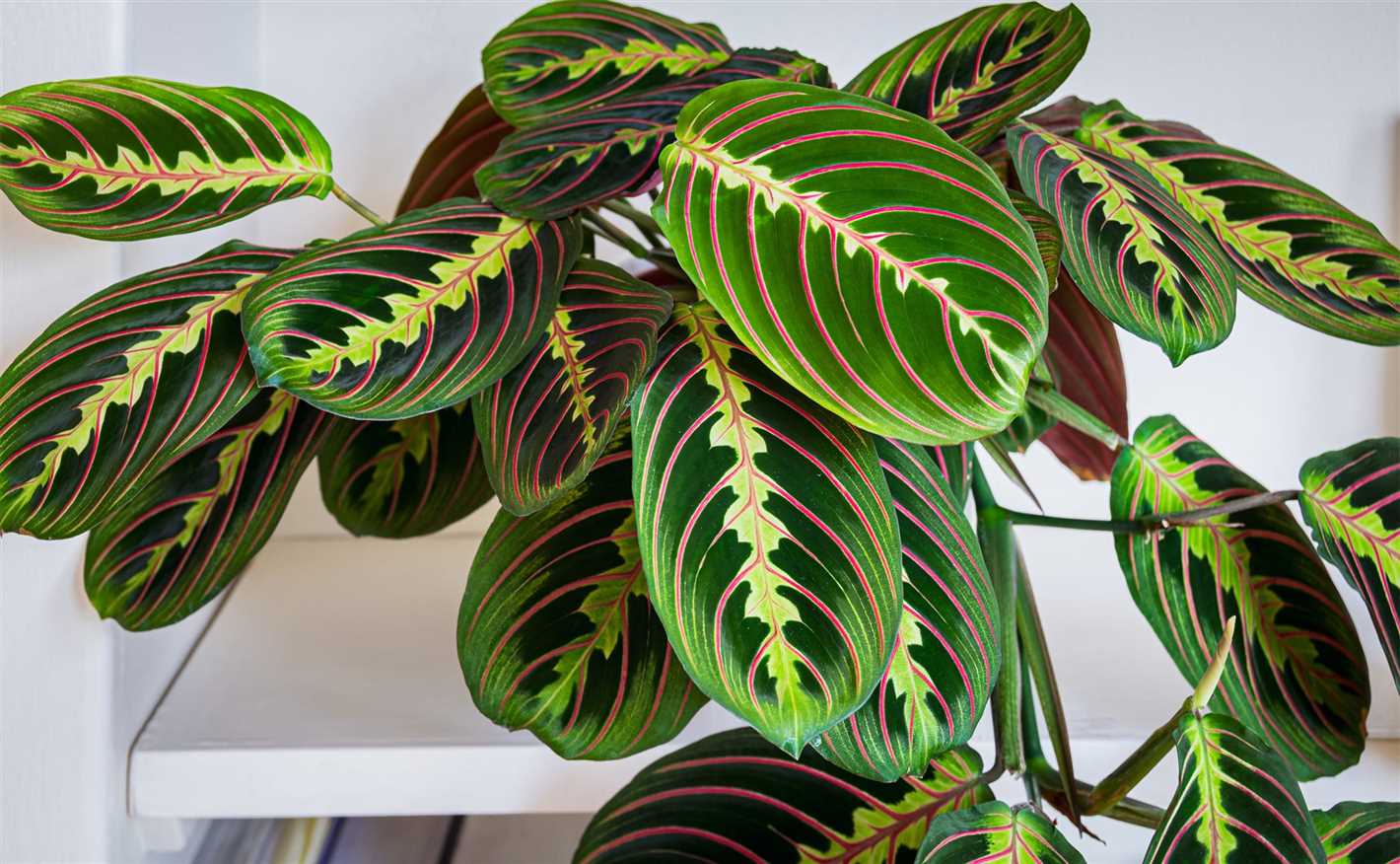

The Maranta Leuconeura, also known as the Prayer Plant, is one of the most popular types of Maranta plants. It is characterized by its unique leaf patterns, featuring dark green leaves with light green veins. The leaves fold up at night, resembling hands in prayer, hence the name “Prayer Plant”.
2. Maranta Leuconeura erythroneura (Red Veined Prayer Plant)
The Maranta Leuconeura erythroneura, or Red Veined Prayer Plant, is a variation of the Prayer Plant. It is named after its distinctive red veins that contrast against the dark green leaves. This type of Maranta is highly sought after for its striking appearance.
3. Maranta Leuconeura Kerchoveana (Rabbit’s Foot Prayer Plant)
The Maranta Leuconeura Kerchoveana, also known as the Rabbit’s Foot Prayer Plant, is another variation of the Prayer Plant. It is named after its unique leaf pattern, which resembles the footprints of a rabbit. The leaves have dark green coloration with light green stripes and deep red veins.
4. Maranta Fascinator (Herringbone Plant)
The Maranta Fascinator, commonly known as the Herringbone Plant, is a type of Maranta with distinctive herringbone-like markings on its leaves. The leaves have a deep green color and feature light green lines that resemble the skeleton of a fish.
5. Maranta Laxa (Silver Feather)
The Maranta Laxa, or Silver Feather, is a unique type of Maranta with silver-colored leaves. The leaves are elongated and feathery in appearance, giving the plant its name. This variety requires specific care and attention, but it can be a beautiful addition to any indoor garden.
6. Maranta Arundinacea (Arrowroot Plant)
The Maranta Arundinacea, also known as the Arrowroot Plant, is a different species of Maranta compared to the ones mentioned above. It is primarily grown for its starchy rhizomes, which are used to produce arrowroot powder. The leaves of this plant are plain green and do not have the distinctive patterns of other Maranta types.
Identifying Maranta Plants
When trying to identify a Maranta plant, pay attention to the leaf patterns, colors, and venation. Most Maranta plants have dark green foliage with unique patterns, such as stripes, dots, or veins, in contrasting colors. Additionally, many Maranta plants have leaves that fold up at night, which is a characteristic feature of the Prayer Plant family.
It’s also worth noting that Maranta plants are known for their vibrant colors and striking patterns, making them stand out among other houseplants. By observing these distinct characteristics, you can easily identify different types of Maranta plants and appreciate their beauty.
Q&A:
What are some tips for cultivating Maranta?
Some tips for cultivating Maranta include keeping them in bright, indirect light, providing them with consistently moist soil, and regularly misting their leaves to maintain humidity.
What are the different species of Maranta?
There are several different species of Maranta, including Maranta leuconeura (also known as the prayer plant), Maranta arundinacea (also known as arrowroot), and Maranta erythroneura (also known as herringbone plant).
What are the different varieties of Maranta?
There are many different varieties of Maranta, each with unique leaf patterns and colors. Some popular varieties include Maranta leuconeura ‘Fascinator’ (with bold red veins), Maranta leuconeura ‘Kerchoveana’ (with silver-green leaf markings), and Maranta leuconeura ‘Erythroneura’ (with red veins and green spots).
How do you propagate Maranta?
Maranta can be propagated through division or stem cuttings. To propagate through division, carefully separate the plant into smaller sections, ensuring each section has roots attached. For stem cuttings, cut a healthy stem just below a node and place it in water or moist soil until it develops roots.
How do you care for Maranta plants?
To care for Maranta plants, keep them in bright, indirect light, water them regularly to keep the soil consistently moist, and mist their leaves or use a humidifier to maintain humidity. They also benefit from occasional fertilization with a balanced houseplant fertilizer.
Can Maranta grow outdoors?
Maranta plants are typically grown as indoor houseplants, as they prefer warm and humid conditions. However, they can be moved outdoors to a shaded, protected area during the summer months if the weather is suitable.
Are Maranta plants toxic to pets?
Maranta plants are non-toxic to cats and dogs, making them a safe choice for pet owners. However, it’s always a good idea to monitor your pets around plants and consult with a veterinarian if you have any concerns.
Video:
The best way to propagate prayer plants (Maranta leuconeura)
